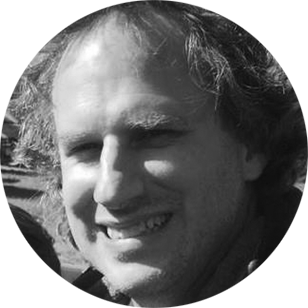Biden's lifeline for red-state cities
Republican states have strangled progressive cities for decades. Now Democrats are offering a way out.


El Paso is being squeezed.
In 2019, the Texas state legislature passed SB2 which limits property tax increases to 3.5 percent per year. Meanwhile, most of the city's budget is based on largely unfunded state mandates. And where the state in 2008 funded 45 percent of local education costs, that's been reduced to just 39 percent today.
So even before the COVID-19 crisis hit, "The wiggle room we have to spend on projects we think are important becomes smaller and smaller," observes El Paso County Commissioner, David Stout.
The Week
Escape your echo chamber. Get the facts behind the news, plus analysis from multiple perspectives.

Sign up for The Week's Free Newsletters
From our morning news briefing to a weekly Good News Newsletter, get the best of The Week delivered directly to your inbox.
From our morning news briefing to a weekly Good News Newsletter, get the best of The Week delivered directly to your inbox.
El Paso, a city similar in size to Boston and Washington, D.C., is politically a blue triangle at the far end of a sea of red in West Texas — and Stout thinks politics plays a big role in the increasing limits on local spending: "The state legislature wants to stop local progressive policies from being put in place."
In Georgia, Mayor Joseph Geierman from the small city of Doraville right outside Atlanta, echoes Stout: "We are limited in how we can tax or raise revenue. We spend most of our money on just keeping things running on a regular basis."
The lead-poisoned water crisis in Flint, Michigan was similarly driven by the defunding of local governments in the state, where as far back as 1994, local property tax powers of local governments had been severely limited in Michigan. Addressing critical needs like fixing water systems was financially impossible for cities, but Republican state politicians blamed "local mismanagement" rather than the funding straightjacket imposed by the state.
Luckily for the residents of these localities, there's new hope for an escape. President Biden's American Rescue Plan and the revival of Congressional earmarks are giving local cities, particularly in red states, the first chance in a generation to creatively plan new local projects to demonstrate the possibilities of progressive government.
A free daily email with the biggest news stories of the day – and the best features from TheWeek.com
Remaking the possibilities of local government
El Paso's Stout says since Texas "has preempted us so much and taken over our budget, the only way we can fund anything else is through money coming from the federal government."
While the CARES Act passed in 2020 under President Trump and a Republican Senate contained some funds for local governments, state governments were overwhelmingly given control of the money. All together only $29 billion was sent directly to local governments, under 3 percent of 2017 revenues and hardly meeting the loss of local revenue due to COVID. The $350 billion for state and local governments in the American Rescue Plan, on the other hand, is being distributed in a formula putting far more dollars directly in the hands of local cities of all sizes. The amounts go beyond immediate gaps in budgets and will help fund a wide range of new local projects through 2024.
Similarly, while the restoration of earmarks in Congress is often highlighted as a way to woo moderate Democrats and Republicans to support federal legislation with political rewards they can tout at home, it is also a critical way to help local government officials, particularly the increasingly progressive leaders in cities in red states that are under attack by Republican politicians in those states.
The National League of Cities has long advocated distributing more funds directly to local governments, arguing too many dollars go to state governments and don't filter down to local cities. "The reopening of the earmarks process is long overdue," argues Brittney Kohler, NLC's Legislative Director for Infrastructure and Transportation Services. Earmarks ensure that funds go directly to projects communities need, not just those state governments want to fund. "Whether you are a federal official or at a state Department of Transportation, you don't have the same insight as the Member of Congress."
Bypassing the hostility of Republican state leaders
Far more than a red state-blue state divide, national politics are increasingly a red state-blue city divide. Many state governments do everything possible to politically disenfranchise city voters while also stripping their local governments of power, so the leaders those cities do elect have no ability to implement effective or innovative policy. Stripping governments of revenue to fund local programs goes hand-in-hand with states preempting their legal right to pass local legislation like the minimum wage or mask mandates.
"You see our governor talking about how he doesn't want the federal government interfering in state affairs," says Commissioner Stout in El Paso, "but they turn around and do the same thing to local governments."
It's no coincidence that state government gutting of local power and funding has happened as Black and Latino leaders began to be voted into office over the last few decades in cities across the nation, particularly in red states where they are often a large minority of the overall population but are frozen out of statewide power. White flight to the suburbs meant cities had less representation in state legislatures, and those largely white, increasingly Republican state leaders distributed state money accordingly.
Across the country, public schools in urban districts receive $2,100 less per student than their suburban counterparts, and $4,000 less than rural schools, according to the nonprofit EdBuild. But the extremes can be far worse in some red states: In Texas, the rural middle-class town of Doss receives $16,749 per pupil from the state, while the urban South San Antonio School District serving 10,000 almost entirely nonwhite students receives just $6,264 per student.
A survey by Boston University of 89 mayors across the country found that mayors in Republican states were much more likely to describe the financial support from their states as "less" or "much less" than the average city compared to their peers in Democratic states, and that the perceived hostility was accelerating year-to-year.
Some of the difference is political and racist and the rest is based on radical differences in priorities on what to fund. On infrastructure, states will pay for highways in many cases, but as Georgia's Geierman admits, "There is a lot more philosophical opposition to funding mass transit at the state level. A lot of city-metro Atlanta versus the rest of state conflict is over its funding."
The bottom line is that sending money to red state governments is a recipe for a disproportionate share going to white Republican parts of those states with relatively little filtering down to Democratic-led cities.
A boom in funding — and then a collapse
The legacy of President Franklin Roosevelt's New Deal and President Lyndon Johnson's Great Society in the middle of the 20th century was not just more federal spending but inaugurating large scale revenue transfers to state and local governments. Before the Great Depression, the majority of all government spending was by local governments, not states or the federal government, but that economic collapse also meant the collapse of the property tax revenue local governments depended on. New federal programs created by the New Deal were largely administered by state and local governments, a radical new innovation in federalism for the nation that political scientists dub the birth of "cooperative federalism."
While the New Deal bolstered city finances in the short-term, the longer-lasting legacy was the transformation of most state governments from mostly skeletal operations spending an average of just 1.3 percent of GDP just before the Great Depression to nearly 4 percent of GDP by the 1950s. In the immediate postwar period, even more federal programs were routed through the state governments and a distinct anti-urban agenda emerged, the most notorious example being the combination of interstate highway system spending and racist federal home loan programs undermining cities.
LBJ's Great Society sought deliberately to reinvigorate the cities through enacting more direct transfers to local governments. According to the Urban Institute, 204 distinct new categorical programs were created to grant funds directly to urban communities under Johnson. Nixon and Ford pushed back against the trend, but this largely took the form of consolidating the multiple categorical grants into broader block grants like the Community Services Block Grant (CSBG). Overall, federal funding for cities would peak at 15 percent of city budgets in 1978 — and as much as 25 percent in some larger cities.
But a subsequent crash in funding for city budgets would be driven by Reagan and conservative legislators in Congress. CSBG became the last major block grant for cities surviving from the 1960s era — and later Republican presidents repeatedly sought to eliminate it. Even with the remains of CSBG in place, federal funding for cities would fall to just 3 percent of city revenues on average by the 2000s. The result, as one report highlighted, has made "cities increasingly reliant on their state governments at a time when cities have lost political strength in state legislatures."
Forging a new federal-local partnership
Biden and Congress stepping in with the American Rescue Plan and the proposed American Jobs Plan, combined with Congress acting to direct those funds to community-sponsored projects, should be the basis for a radical rewrite of federal-state-local relationships. Directing far more federal funds on a permanent basis to local governments will ensure greater racial and economic equity compared to how those funds are currently directed by red state governments.
But such an approach also better fits the current model needed for innovation in the global economy. The Brookings Metropolitan Policy Program has highlighted in multiple studies that urban counties are driving the bulk of the nation's economy. "These places are more likely to come up with the innovative solutions that are going to put the U.S. back into global leadership," says Amy Liu, director of the program.
While big infrastructure projects can be directed from D.C., there are a myriad of smaller community needs that only political leaders on the ground are going to recognize and want to fund. This is part of the logic of the new congressional earmark system, where House members solicit projects from community leaders and publicly submit the 10 most needed to the House Appropriations Committee. Multiple local leaders I talked to highlighted the gains from the less flashy projects often ignored by federal and state funders — the crosswalk or bike lane not included in a highway project or a mental health intervention team to accompany the El Paso Sheriff's Department to defuse situations and prevent people getting shot or killed. The latter is a program that El Paso Congresswoman Veronica Escobar chose as one of her proposed earmark projects.
Along with expanding the new earmarks system in the future as it proves its success, NLC's Kohler wants a similar focus applied to all new federal funding plans, where the "House makes cities partners in formula funds [and shares] that pie fairly with cities throughout states."
Legacy rules need to change to make a federal-local partnership work, given the hostility of many red state governments. Mayor Geierman in Georgia details how jurisdictions around the Atlanta metro region have agreement among themselves for the design of a rapid transit bus system, but don't have the extra money in their budgets for the 25 percent funding match demanded by the federal government for such projects in most legislation. "The state doesn't require a 25 percent match for building highways, but local governments have to pay to add bus rapid transit to the project," says Mayor Geierman, so Congress needs to eliminate the funding match requirement for local projects — or they effectively give red state leaders a veto on most blue city projects.
This is also the reason Republican opposition to direct funding of local governments has been so fierce, with right-leaning advocacy groups like the Tax Foundation saying a "cash infusion for state and local governments has become a solution in search of a problem."
But there is a deep problem. Fifty years ago, the federal government played a vital role in directly funding local government budgets and that support has collapsed over the decades, leaving them at the mercy of state government limits and vulnerable to shocks like COVID. Biden and Congress need to make delivering resources directly to local communities a top priority in all legislation they write and implement. The political result will be giving local leaders the resources to make the case for progressive policy in the heart of those red states. Much as the New Deal and Great Society did, it will make those local leaders real political players and shift statewide debates at election time.
"It gives us the opportunity to invest in these programs, and if we do it right," argues El Paso Commissioner Stout, "we can utilize that to make the political case that these programs work. We can demonstrate that to voters and have their voices heard at the ballot box."
Nathan Newman is a writer and teaches Criminal Justice and Sociology at CUNY. His work has appeared in The Nation, The American Prospect, New York Daily News, and Dissent.
-
 Into the Woods: a ‘hypnotic’ production
Into the Woods: a ‘hypnotic’ productionThe Week Recommends Jordan Fein’s revival of the much-loved Stephen Sondheim musical is ‘sharp, propulsive and often very funny’
-
 ‘Let 2026 be a year of reckoning’
‘Let 2026 be a year of reckoning’Instant Opinion Opinion, comment and editorials of the day
-
 Why is Iran facing its biggest protests in years?
Why is Iran facing its biggest protests in years?TODAY’S BIG QUESTION Iranians are taking to the streets as a growing movement of civic unrest threatens a fragile stability
-
 Bari Weiss’ ‘60 Minutes’ scandal is about more than one report
Bari Weiss’ ‘60 Minutes’ scandal is about more than one reportIN THE SPOTLIGHT By blocking an approved segment on a controversial prison holding US deportees in El Salvador, the editor-in-chief of CBS News has become the main story
-
 Has Zohran Mamdani shown the Democrats how to win again?
Has Zohran Mamdani shown the Democrats how to win again?Today’s Big Question New York City mayoral election touted as victory for left-wing populists but moderate centrist wins elsewhere present more complex path for Democratic Party
-
 Millions turn out for anti-Trump ‘No Kings’ rallies
Millions turn out for anti-Trump ‘No Kings’ ralliesSpeed Read An estimated 7 million people participated, 2 million more than at the first ‘No Kings’ protest in June
-
 Ghislaine Maxwell: angling for a Trump pardon
Ghislaine Maxwell: angling for a Trump pardonTalking Point Convicted sex trafficker's testimony could shed new light on president's links to Jeffrey Epstein
-
 The last words and final moments of 40 presidents
The last words and final moments of 40 presidentsThe Explainer Some are eloquent quotes worthy of the holders of the highest office in the nation, and others... aren't
-
 The JFK files: the truth at last?
The JFK files: the truth at last?In The Spotlight More than 64,000 previously classified documents relating the 1963 assassination of John F. Kennedy have been released by the Trump administration
-
 'Seriously, not literally': how should the world take Donald Trump?
'Seriously, not literally': how should the world take Donald Trump?Today's big question White House rhetoric and reality look likely to become increasingly blurred
-
 Will Trump's 'madman' strategy pay off?
Will Trump's 'madman' strategy pay off?Today's Big Question Incoming US president likes to seem unpredictable but, this time round, world leaders could be wise to his playbook
